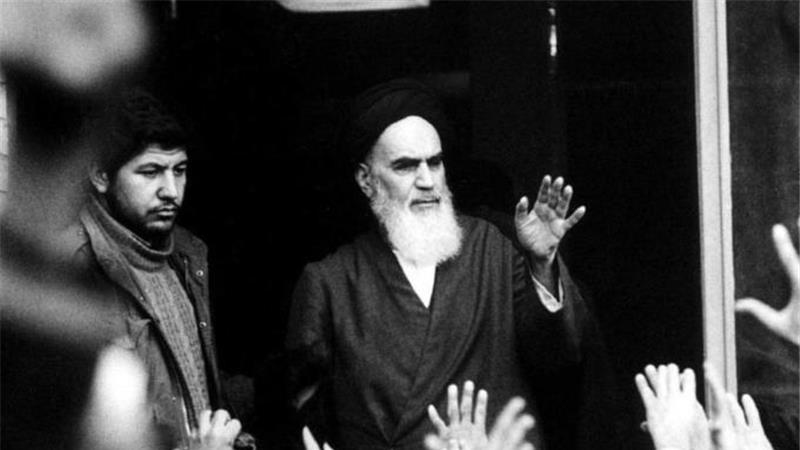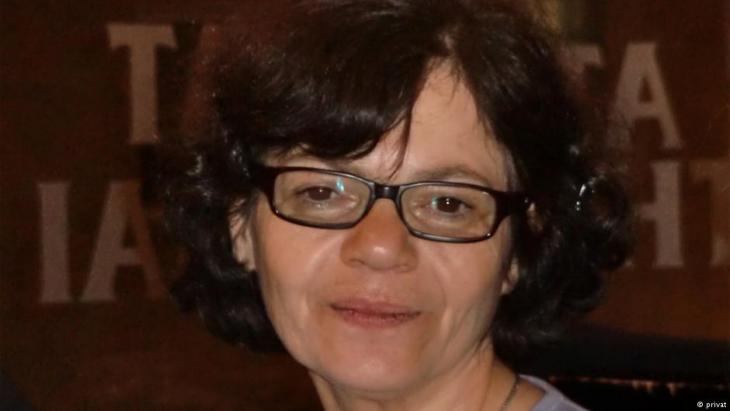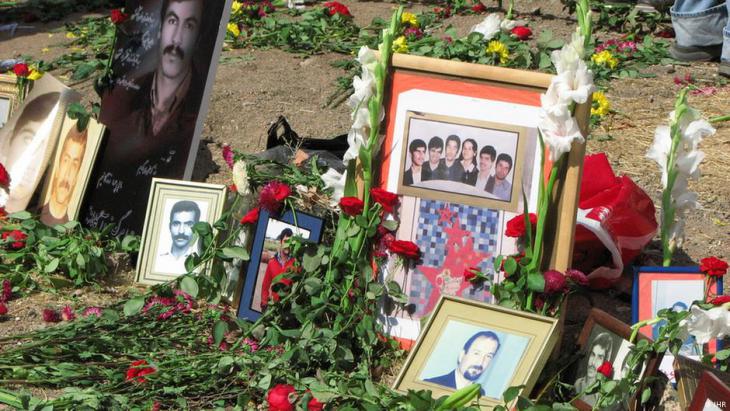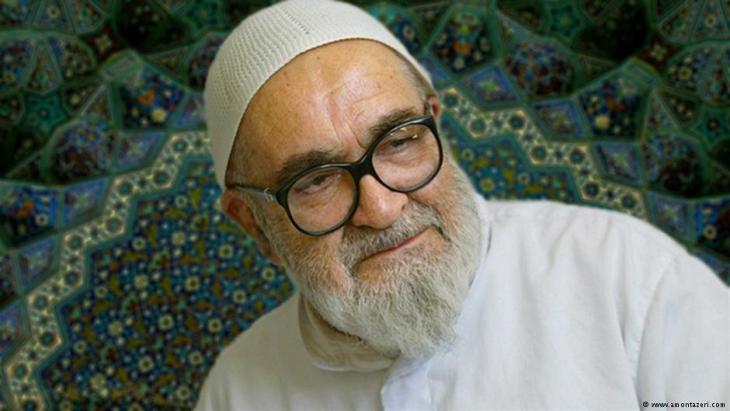A dark chapter in Iranian history

Why did the regime choose to carry out these mass executions in the summer of 1988 – why not sooner or later?
Monireh Baradaran: The so-called purges in Iranian prisons in the summer of 1988 were part of a strategy that the Islamists had been using since 1979, immediately after the revolution, to consolidate their Islamic system. It was a question of not allowing any dissent from the left, from the People's Mujahideen, or from party-politically neutral intellectuals in society. They were either executed, arrested, or driven into exile. Though altered in form, such practices are still going on.
Were the executions a spontaneous act on the part of the regime?
Baradaran: No, they were planned. Many prisoners had been separated from each other weeks before; some were even transferred to other prisons. One had the impression that something extraordinary, something terrible was imminent. It was just before the end of the eight-year war with Iraq. During that time, the Mujahideen, with the support of the Iraqi army, attacked Iran from Iraq in the hope of overthrowing the regime. Their attack was repulsed within three days. Seeking vengeance, the regime began to execute more prisoners belonging to the People's Mujahideen. The mass executions also provided an opportunity to get even with the left.
What attempts were made to legitimise these actions?
Baradaran: Ayatollah Khomeini issued a decree.
Is it known how many detainees were executed at that time?
Baradaran: More than 3,800 cases have been documented so far. About 90 percent of the victims belonged to the Mujahideen. The families of the executed never saw the bodies of their relatives.

Were women and men treated in a similar way?
Baradaran: Left-wing women were subject to the religious commandment "ertedad" (apostasy). According to this commandment, women who fall away from the faith must be imprisoned until they repent or die. Many left-wing women were ordered to receive 25 lashes a day during prayer times. The whipping lasted as long as the prayer. Mujahideen women were executed even though they were Muslim believers. In the tract where I was sitting, there were 44 mujahid women in total, all of whom were executed. There was a team of three in Tehran, the so-called "Death Commission". They asked the Mujahideen: "What do you think of the Islamic Republic? How do you feel about your organisation? If the prisoner said, "I am a mujahideen," it was enough to be executed.And how did they deal with left-wing activists?
Baradaran: They were asked: "Are you a believing Muslim? If this question was answered in the negative, it meant execution. When someone said, "I was born into an Islamic family", other questions were asked, such as: "Do you pray?" And then, depending on the arbitrary verdict arrived at by these judges, the prisoners were either executed or not.
So you could escape death by lying?
Baradaran: Yes. But most prisoners had no idea what these interrogations were ultimately for. Some thought it was simply a matter of separating certain groups within the prison.
Why did the regime end the mass executions? Why not eliminate all left-wing prisoners and mujahideen?
Baradaran: There are no plausible reasons for this. But I assume that the regime was convinced that it had spread enough terror with these mass executions to silence its political opponents. By not prolonging the horror they prevented the possibility of protests by families and human rights activists.

So you donʹt believe that criticism within the regime could have been a reason for ending the massacre?
Baradaran: Ayatollah Montazeri – heir presumptive to Revolutionary Leader Khomeini – who later fell out of favour and was placed under house arrest, did protest. Not so long ago, a recording was published in which he spoke to the judges who had sentenced the prisoners to death in the summer of 1988. On these recordings he expresses outrage at what happened. Then we hear the judges talking about the role they played in a totally off-hand manner, as if they werenʹt talking about killing people, but about some business matters.
Apart from those responsible, was everyone else really in the dark about these secret executions?
Baradaran: Of course not, some bits of information inevitably leaked out. The families knew that the visiting ban could not be a good sign – that something unusual was going on. So they kept gathering in front of the prisons and asking for explanations. They also informed foreign countries about what was happening, finally human rights organisations such as Amnesty International got wind of it. Some Friday preachers in Iran like Rafsanjani or Mousavi Ardebili had also dropped terrible hints. But nobody knew about the real extent of the executions.
Were you interrogated?
Baradaran: No.Which of your fellow prisoners were executed?
Baradaran: They were all political prisoners, the majority of whom had been imprisoned since 1981 and had long since been sentenced. Many of them had served their sentences and should have been released. The majority still remained true to their political beliefs.
When and how did you first hear about the executions?
Baradaran: At the beginning of the second summer month, three Mujahideen supporters were collected from our wing for the first time. None of us had received a visiting permit for weeks, which worried us. The Mujahid women didn't come back and my instincts said something terrible had happened, because it was clear that they hadn't been released. But nobody knew what had happened to them. Only when we once again allowed to receive visitors, did we realise the full extent of the executions.
There has been a lot of investigation in recent decades to shed light on what happened that summer. What has been the outcome?

Baradaran: We owe a tremendous debt to the so-called "Mothers of Khavaran" (the mothers of the political prisoners killed in the mass executions). For years, through their meetings in the Khavaran cemetery (where many of the executed are buried in mass graves), in front of the Tehran Justice Department, and through open letters to those responsible, they kept on drawing attention to the mass executions, even ensuring their voices were heard abroad. Gradually other women joined them. They wanted and still want to know why their children, husbands or siblings were executed and where they are buried. These are questions that remain unanswered.
Various initiatives then kicked off abroad. Among other things, the Borumand Foundation commissioned British judge Geoffrey Robertson to research the case and prepare a legal opinion. He talked to survivors and contemporary witnesses, including myself, and announced in 2010 that the mass executions of the summer of 1988 could be described as crimes against humanity.
There was also a so-called Iran Tribunal, a Truth Commission...
Baradaran: Yes, consisting of several international judges who dealt with the issue and symbolically accused the Islamic Republic.
The role models who inspired the "Mothers of Khavaran" caused a stir internationally. Iʹm thinking of the mothers of disappeared political prisoners in Argentina and Turkey. Why didn't the "Mothers of Khavaran" receive the same attention as they did?
Baradaran: This is an important question for which I have no plausible answer. The mothers in Argentina were supported by the media and human rights activists in all continents, even by the Pope. Unfortunately, the "Mothers of Khavaran" have not received the same international support. Perhaps the black and white image of Iran in the media is a factor. Your either romanticise Iran or you show focus on the dark side. The fact that there is resistance and striving for justice, for which these several hundred mothers stand, does not really fit into this picture. Whatʹs more, the defence of human rights has become institutionalised – like for instance in Germany. We are no longer living in the 1970s or 1980s, when thousands of people took to the streets for democracy and human rights. Today, people prefer to sign petitions on the Internet.
Do you think that at some point these crimes will be exposed for all to see?
Baradaran: Definitely. Thanks to modern digital communications, especially via the social networks, more and more Iranians now know about these horrible events. In contrast to the 1980s, the mass executions of summer 1988 are no longer just a matter for the families of the executed, but for society as a whole. The younger generation is showing an interest in these political crimes. And this gives me hope – indeed certainty – that at some point in the foreseeable future these events will be subject to comprehensive clarification. For this to happen, however, we – the activists and the families of the executed – need the solidarity of the international community.
Interview conducted by Farhad Payar